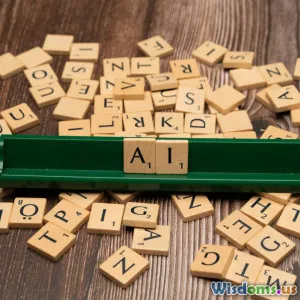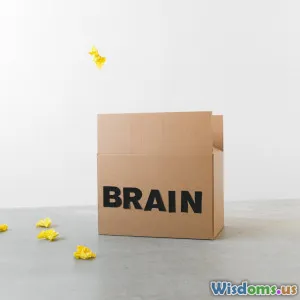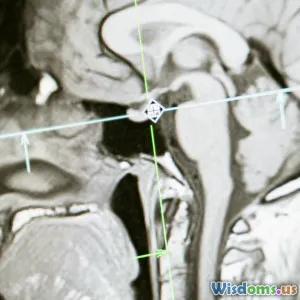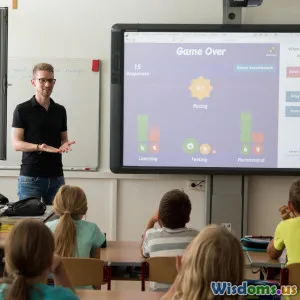
Inside the Mind A Deep Dive into Language Processing and the Brain
10 min read Explore how the brain processes language, revealing neural pathways and cognitive mechanisms behind speech, comprehension, and communication. (0 Reviews)
Inside the Mind: A Deep Dive into Language Processing and the Brain
Language is the vessel of human thought, a bridge enabling us to share ideas, express feelings, and shape culture. But how exactly does the brain transform abstract symbols into meaningful communication? What neural processes allow babies to acquire language effortlessly, while adults decode complex literature or witty dialogue? This article embarks on a fascinating exploration inside the mind, unraveling the cognitive and neural tapestry underlying language processing.
Introduction: The Mystery Behind Language in the Brain
Language is one of the most sophisticated cognitive abilities humans possess—it enables storytelling, reasoning, planning, and social bonding. Unlike mere sound production, language requires integration across sensory perception, memory, semantics, and motor control. Scientists have long sought to decode how this cognitive juggernaut operates within the biological circuitry of our brains.
In the mid-19th century, discoveries like Broca’s and Wernicke’s aphasia patients brought profound insights linking specific brain areas to language functions. Since then, advances in neuroimaging, electrophysiology, and computational modeling have expanded our understanding drastically. Let’s begin by uncovering the basic neural architecture responsible for language.
Neural Foundations of Language Processing
The Classic Areas: Broca’s and Wernicke’s Regions
French physician Paul Broca first identified an area in the left frontal lobe responsible for speech production—now known as Broca’s area. Patients with lesions here often struggle to produce fluent speech, a condition termed Broca’s aphasia.
Meanwhile, Carl Wernicke discovered a temporal lobe region vital for language comprehension. Damage in this area leads to witty but meaningless speech and difficulty understanding others, known as Wernicke’s aphasia.
Together, these two regions form part of a broader language network primarily lateralized to the brain’s left hemisphere in most right-handed individuals.
Beyond the Classics: Additional Language Networks
Modern neuroimaging reveals a distributed network supporting language:
- Arcuate fasciculus: The white matter tract connecting Broca’s and Wernicke’s areas, critical for reconstructing meaning during conversation.
- Angular gyrus and supramarginal gyrus: Integrate visual and auditory language cues.
- Primary auditory cortex: Processes the sounds of speech.
- Motor cortex: Coordinates articulatory movements for speech production.
- Prefrontal cortex: Involved in working memory and complex language tasks.
This network operates in concert during reading, listening, speaking, and writing.
Hemispheric Dominance and Language
While left hemisphere dominance is typical, studies have shown that the right hemisphere contributes to nuances like intonation, prosody, and metaphor interpretation. For example, damage to the right hemisphere can impair understanding sarcasm despite intact literal language abilities.
Cognitive Processes Underlying Language
Language processing involves multiple intertwined cognitive faculties:
Phonological Processing
This refers to recognizing and interpreting the smallest sound units (phonemes). Toddlers’ remarkable ability to distinguish phonemes within their native language(s) contrasts with their decreasing sensitivity to foreign phonemes, illustrating how the brain adapts tuned connections during critical periods.
Semantic Processing
Comprehension hinges on attaching meaning to words and sentences. Neuroimaging studies pinpoint regions like the middle temporal gyrus and the anterior temporal lobe as semantic hubs. For instance, when reading a word like "apple," these areas activate representations linked to its color, shape, and concept.
Syntax and Grammar Processing
Parsing sentence structure requires understanding syntax—a complex cognitive feat. Broca’s area also plays a crucial role here, helping organize words into grammatically correct phrases.
Experiments using fMRI reveal increased activity in Broca’s area during sentences with complex grammar, like those containing nested clauses.
Working Memory and Language
Languages require short-term storage—working memory aids in holding words and phrases during conversations. The dorsolateral prefrontal cortex supports these temporary buffers enabling smooth conversation flow.
Language Acquisition: How the Brain Learns Language
Critical Period Hypothesis
Neuroscience supports the idea of a critical period early in life when language acquisition is most efficient. Children deprived of language input, such as cases of severe neglect, often struggle with language development later, highlighting brain plasticity constraints.
Bilingualism and Neuroplasticity
Learning multiple languages reshapes the brain. Research indicates increased gray matter density in bilingual individuals’ left inferior parietal cortex and improved executive control functions.
For example, bilingual children often perform better on tasks involving attention shifting and conflict resolution.
Neural Mechanisms of Language Learning
Hippocampus engagement helps encode new vocabulary, while auditory and motor cortices assist in pronunciation and articulation practice.
Innovative studies using electrophysiological measures like event-related potentials (ERPs) show how brain responses differ when processing familiar versus novel words.
Language Disorders Shed Light on Processing
Aphasia
Stroke or injury can lead to different aphasia types, revealing the functional roles of language areas. For example, a stroke affecting Broca’s area typically results in non-fluent speech but preserved comprehension.
Dyslexia
This neurodevelopmental disorder affects reading despite adequate intelligence. Studies implicate atypical activation patterns in the left temporoparietal and occipitotemporal regions responsible for phonological decoding.
Developmental Language Disorder (DLD)
Children with DLD exhibit delayed or impaired language acquisition without identifiable causes. Brain imaging shows structural differences in areas responsible for grammar and syntax.
Understanding these conditions provides insights into normal language processing and avenues for rehabilitation.
Cutting-Edge Research and Future Directions
Brain-Computer Interfaces (BCIs) for Language
Emerging technologies aim to decode neural signals to aid communication in patients with speech impairments. For example, researchers at UCSF have developed implants that interpret brain activity to synthesize speech, opening new frontiers.
Neuroplasticity and Language Recovery
Intensive rehabilitative therapies leverage brain plasticity to restore language functions after injury. Combining transcranial magnetic stimulation (TMS) with speech therapy shows promise in improving aphasia outcomes.
Artificial Intelligence and Language Modeling
AI models like GPT and BERT simulate aspects of human language processing, providing tools to investigate cognition and develop assistive language technologies.
Conclusion: A Symphony of Neural Processes
Language processing is a dynamic, multifaceted symphony orchestrated by a complex network of brain regions finely tuned through evolution and experience. From phonemes to semantics, syntax to pragmatics, the brain integrates diverse cognitive functions seamlessly enabling human communication.
Ongoing research continues to peel back layers of this intricate system, offering deeper understanding and innovative treatments for language-related disorders. As we further unlock the neural code of language, we enhance not only scientific knowledge but also our capacity to connect and share the human experience.
References
- Friederici, A. D. (2011). The brain basis of language processing: from structure to function. Physiological Reviews, 91(4), 1357–1392.
- Price, C. J. (2012). A review and synthesis of the first 20 years of PET and fMRI studies of heard speech, spoken language, and reading. NeuroImage, 62(2), 816–847.
- Hartshorne, J. K., Tenenbaum, J. B., & Pinker, S. (2018). A critical period for second language acquisition: Evidence from 2/3 million English speakers. Cognition, 177, 263–277.
- Wilson, S. M. (2017). Neural correlates of fascinating language disorders. Current Opinion in Neurobiology, 46, 118–125.
- Moses, D. A., Leonard, M. K., & Chang, E. F. (2021). Real-time decoding of question-and-answer speech dialogue using human cortical activity. Nature Communications, 12, 750.
Rate the Post
User Reviews
Popular Posts




















